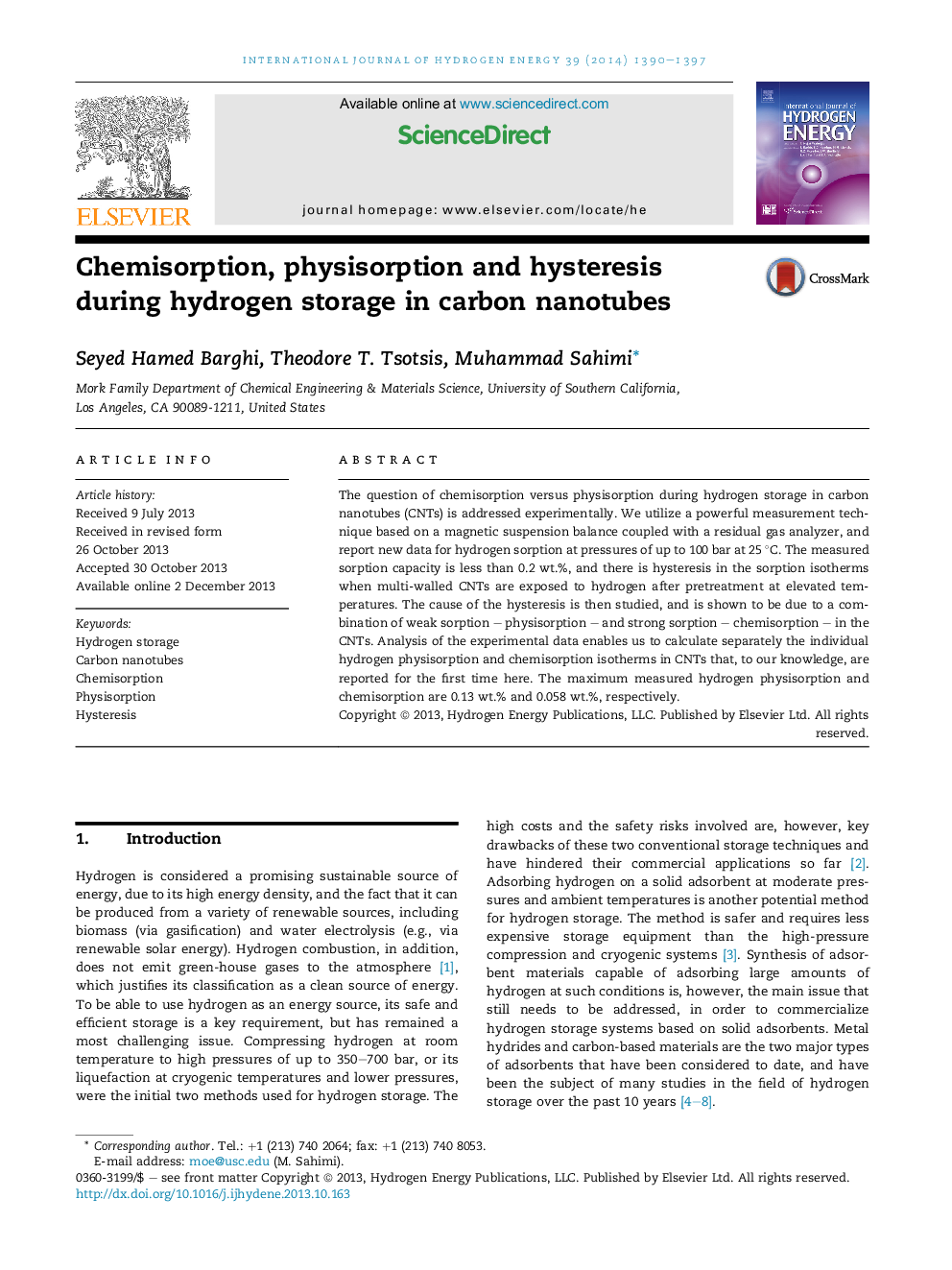| Article ID | Journal | Published Year | Pages | File Type |
|---|---|---|---|---|
| 7720882 | International Journal of Hydrogen Energy | 2014 | 8 Pages |
Abstract
The question of chemisorption versus physisorption during hydrogen storage in carbon nanotubes (CNTs) is addressed experimentally. We utilize a powerful measurement technique based on a magnetic suspension balance coupled with a residual gas analyzer, and report new data for hydrogen sorption at pressures of up to 100 bar at 25 °C. The measured sorption capacity is less than 0.2 wt.%, and there is hysteresis in the sorption isotherms when multi-walled CNTs are exposed to hydrogen after pretreatment at elevated temperatures. The cause of the hysteresis is then studied, and is shown to be due to a combination of weak sorption - physisorption - and strong sorption - chemisorption - in the CNTs. Analysis of the experimental data enables us to calculate separately the individual hydrogen physisorption and chemisorption isotherms in CNTs that, to our knowledge, are reported for the first time here. The maximum measured hydrogen physisorption and chemisorption are 0.13 wt.% and 0.058 wt.%, respectively.
Related Topics
Physical Sciences and Engineering
Chemistry
Electrochemistry
Authors
Seyed Hamed Barghi, Theodore T. Tsotsis, Muhammad Sahimi,
